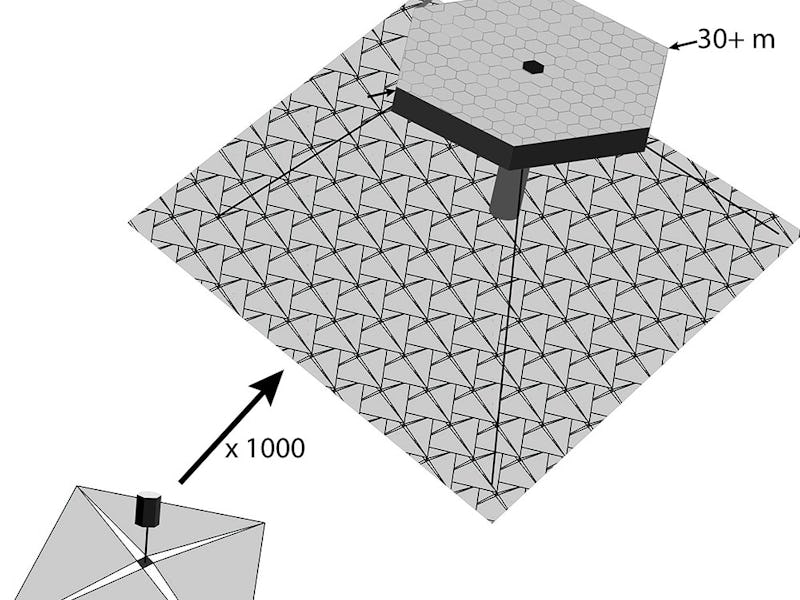Autonomy in space is fairly common. Uncrewed spacecraft launch on almost a regular basis and companies such as SpaceX and Blue Origin strive to make space travel autonomous. So it’s not that surprising that a design for a space telescope includes the ability for it to assemble itself.
Dmitry Savransky is an assistant professor of mechanical and aerospace engineering at Cornell University, and he came up with the idea for the modular active self-assembling space telescope swarms for the first phase of the 2018 NASA Innovative Advanced Concepts (NIAC) program as reported by the university. Savranksy admitted it’s a “crazy-sounding idea,” but to see farther away to find exoplanets, the size of space telescopes need to increase.
Graphic depiction of Modular Active Self-Assembling Space Telescope Swarms
“James Webb [telescope] is going to be the largest astrophysical observatory we’ve ever put in space, and it’s incredibly difficult,” he said. “So going up in scale, to 10 meters or 12 meters or potentially even 30 meters, it seems almost impossible to conceive how you would build those telescopes the same way we’ve been building them.”
The way the self-assembling telescope would work is programming hexagon-shaped module at a size of 1 meter across. On top of the modules would be the active mirror assembly. These modules would be part of multiple rockets’ payload, and when released in space, they will navigate on their own via a solar sail, which would act as a sunshield when assembled. The ideal location for this telescope would be the Sun-Earth L2, a spot between the sun and Earth where the gravitational pull from both objects would equal the centrifugal force of the telescope.
Savransky will head to Washington D.C. for the NIAC Orientation Meeting on June 5-6. He, along with 15 other scientists, will discuss their ideas at the meeting. As a Phase 1 winner, Savranky will receive $125,000 over nine months to develop the concept.
NASA’ NIAC program looks for “far reaching, long term advanced concepts.” Other Phase 1 winners include an idea of flapping wing flyers to explore Mars and a way to map small space debris.
